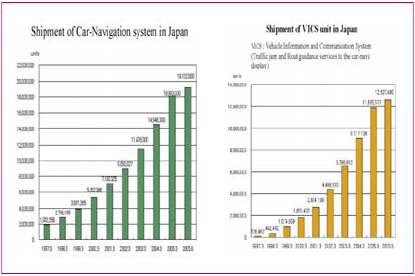Articles in the Articles Category
GAGAN is an Indian Space Based Augmentation System (SBAS). Airports Authority of India (AAI) and Indian Space Research Organization (ISRO) to provide the seamless navigation service for all the phases of fl ight over Indian airspace jointly undertake this project. The AAI’s efforts towards implementation of operational SBAS can be viewed as the first step towards introduction of modern CNS/ATM system over Indian airspace…
Own, control, use and misuse.
That’s the story about information.
When search engines like Google, Yahoo and Micorsoft open new vistas …
April 2006
National Workshop on Role of Geodesy in Surveying Practices
10 – 11 April, 2006, Geodetic & Research
Branch, Survey of India, Dehradun
gandrb@vsnl.net
IEEE/ION PLANS 2006
25- 27 April, San Diego, …

JAESat is an Australian joint micro-satellite project between Queensland University of Technology, Australian Space Research Institute and other national and international partners, i.e. Australian Cooperative Research Centre for Satellite Systems, Kayser-Threde GmbH, Aerospace Concepts, Auspace to name some of them

Modern technologies should appropriately be blended with government developmental programmes.India is an agrarian country with about 72 per cent (about 80 Crores) of its population in about 5,75,936 villages, the villages are inhibited by the rural poor with agriculture as their predominant occupation.They are largely small and marginal farmers, agricultural labourers, artisansand scheduled castes and scheduled tribes. A large number of rural people (about 30 crore) are still living below the poverty line and often face thebasic problem of survival, viz., jobs, poverty, hunger, shelter, ill-health and disease.

This paper introduces the use of the map database as a sensor in driver assistance and awareness applications.Driver Assistance and awareness applications such as Adaptive Cruise
Control (ACC) and Forward Collision warning need to identify the
primary target in the host vehicle lane,which requires accurate estimation
of the geometry of the road between the host and the target vehicle.

The most important ingredient for “Preparedness”.Unless we are “fully” prepared, we cannot have good and timely
response. And, to be fully prepared with good coordinates is in the
hands of geodesists, surveyors, map or chart makers, and all others,
who generate data. In turn, correct and accurate “Good Coordinates”
and quick and timely advice will strengthen the hands of the country’s
leaders, civil and/or military.If anything is lacking in good
coordinates, “We” would be failing with no room for any excuse(s).

Says Clement Woon, President of Geosystems Division, Leica while explaining the technological
trends in GPS applications. Hexagon AB, a Swedish publicly listed company, acquired Leica
Geosystems AG in October 2005. Since then we have been organized
into three divisions; namely the Geosystems Division, the Measuring
Tools Division and the Geospatial Imaging Division. We are now part
of a larger global group focusing on measurement technologies.

says Maj Gen M Gopal Rao, Surveyor General of India while discussing the vision, status and
direction of Survey of India.When Survey of India (SoI) had the basic role of meeting Defence needs
of mapping, it fulfi lled this national commitment with fl ying colours.
Defence and Security agencies primarily depend on the topographical
maps in every activity of planning their strategy.











 (5.00 out of 5)
(5.00 out of 5)